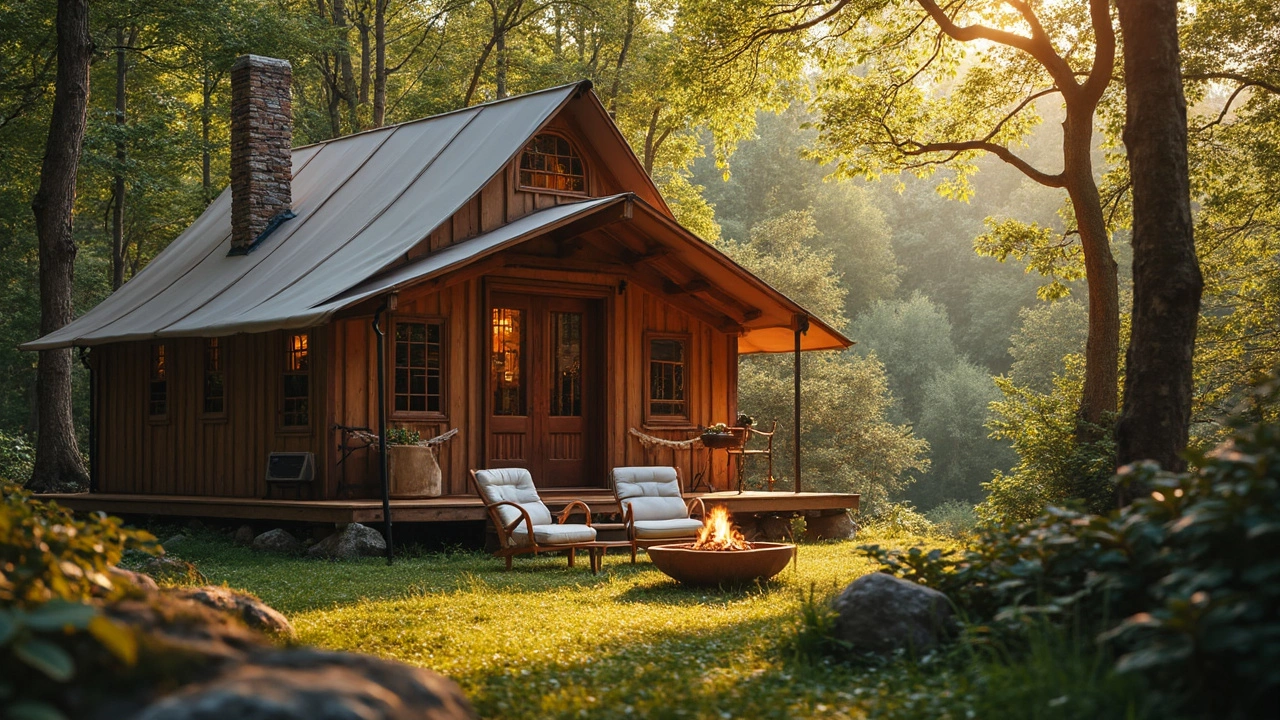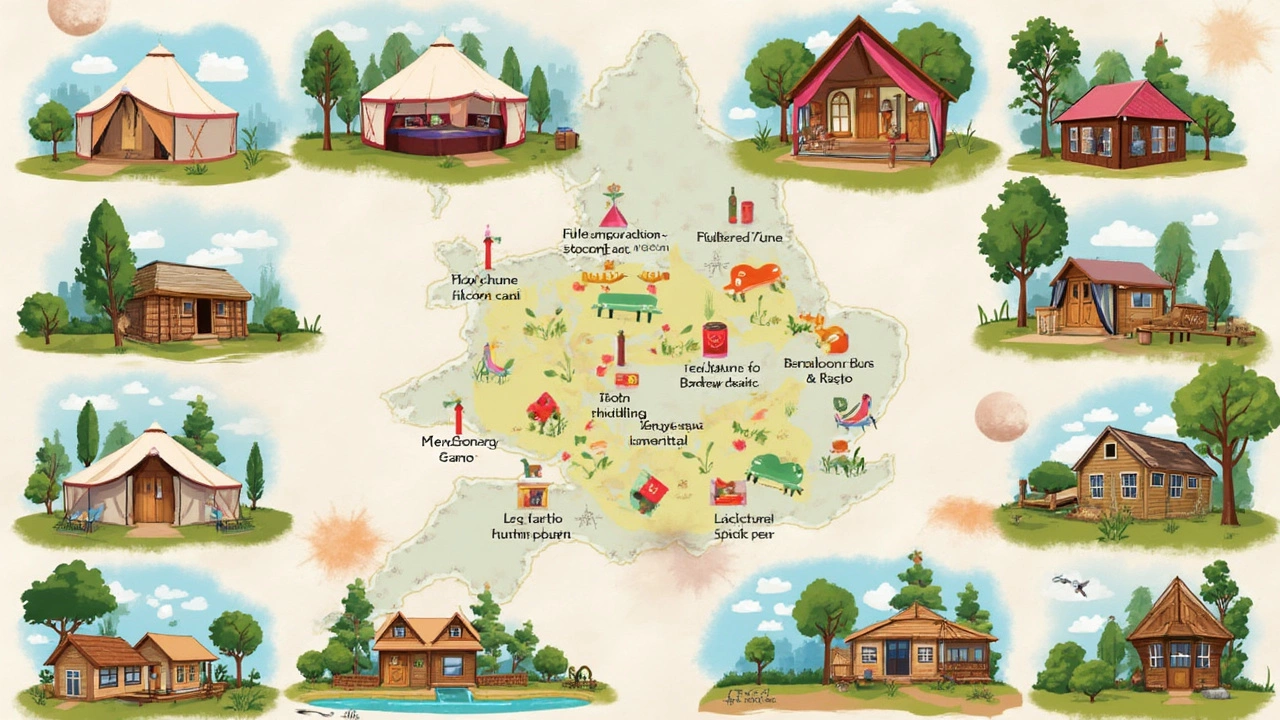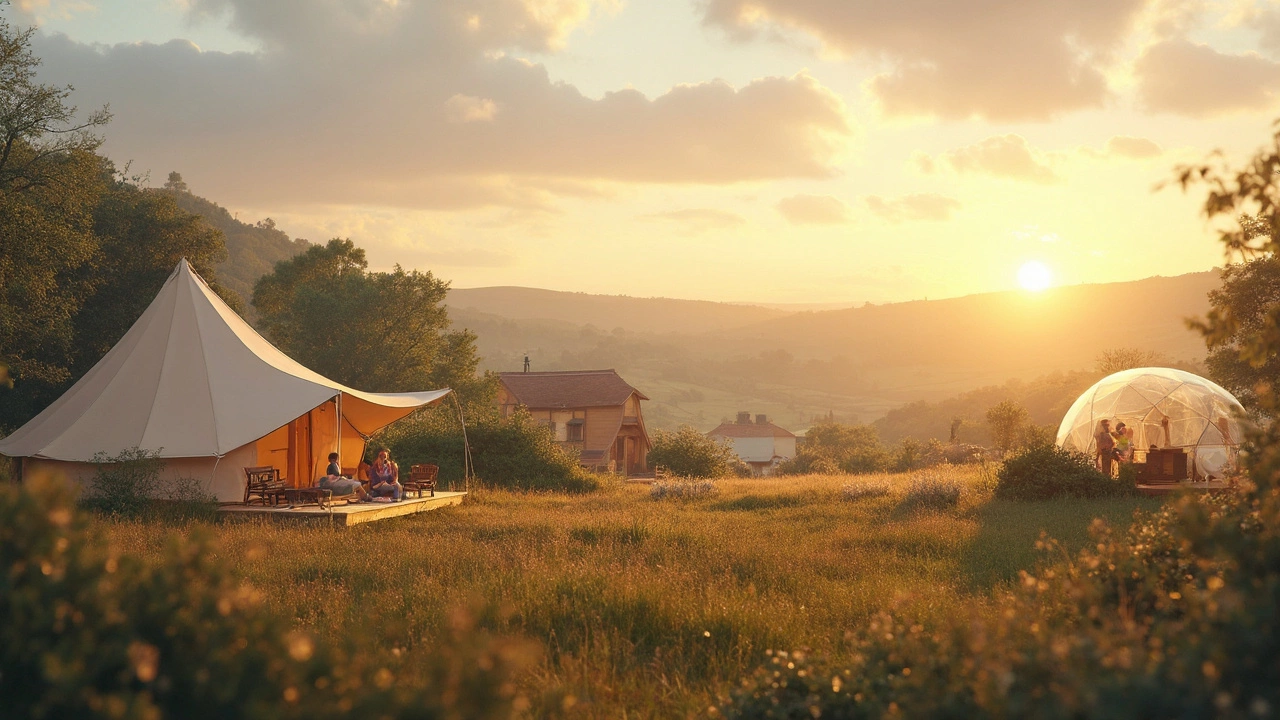If you've ever dreamed of escaping to the great outdoors without sacrificing comfort, glamping might just be your go-to adventure. But before you pack your bags, you might want to know what kind of dent it could leave in your wallet. Wondering about the price tag on those cozy little cottages or fancy tents that have been popping up everywhere? Well, you're not alone.
Let’s get to the core of the matter. The cost of glamping structures can vary quite a bit. It’s not just about picking the prettiest tent or the sturdiest wood; factors like materials, size, and those extra little luxuries play a huge role in determining how much you’ll actually spend. It's like choosing between a simple BBQ night at home or a full-blown gourmet dinner out.
But don't worry, you don’t have to feel overwhelmed. Whether you’re considering setting up your own glamping corner or just want to get a taste of it for the weekend, understanding the costs can help you make smarter decisions. Buckle up for a breakdown on what you might want to budget for if glamping is in your future.
- Understanding the Basics of Glamping Structures
- Material Impact on Costs
- Size and Amenities: What Really Matters?
- Budget-Friendly Choices
- Long-Term Investments and Value
Understanding the Basics of Glamping Structures
Alright, so you're curious about glamping structures—those magical places where nature meets comfort. Think of them like camping's cooler, more luxurious cousin. But what makes a structure suitable for glamping rather than just regular camping?
First off, it’s all about comfort with a touch of the great outdoors. Glamping structures are designed to offer the coziness of home but right in the midst of nature. Unlike traditional camping tents, these are often equipped with real beds, electricity, and sometimes even plumbing. From safari tents to yurts and treehouses, there's a style for just about everyone.
When it comes to materials, they can range from canvas to wood to even recycled materials for the more eco-conscious. Canvas tents are a popular choice because they’re durable and breathable. Wood is commonly used for sturdier structures like cabins or pods, giving them a more permanent feel without actually needing to be permanent.
And size matters, but not in the way you might think. It's more about how that space is utilized. Even a small structure can feel spacious with clever design. Think high ceilings, big windows, and multi-use furniture that can transform at the drop of a hat (or pillow).
If you’re just dipping your toe into the glamping world, it’s worth checking out different styles to see what fits your vibe. A rustic cabin with a wood-burning stove has a different charm than a sleek, modern tiny house with all the tech gadgets. The choice is yours, so go ahead and pick your adventure!
Material Impact on Costs
Ever think about how the material of a glamping structure could change the price up or down? It’s like comparing a canvas tote to a leather handbag. The material not only influences the looks and feel but can seriously impact your budget.
For starters, many glamping setups use canvas tents, which can vary in thickness and quality. Thicker canvas is more durable and weather-resistant, and naturally, it costs more. But hey, it's great if you’re planning to host guests during all seasons, especially the wetter ones in places like New Zealand.
Then you've got the wooden structures. If you're looking at something more permanent, like a cute glamping cottage, wood is a popular choice. The type of wood can swing the price significantly. Cedar and redwood are attractive and durable but can be pricier than pine or spruce. Think of it as investing in a solid piece of furniture versus a flat-pack shelf.
Let’s not forget the cost of fabrics and materials used for interiors. High-quality insulation, fancy bedding, or chic curtains can add up fast. So, if you’re in a warmer climate and don't need the extra insulation, you might save a bit.
Here’s a quick look at some common materials and their typical costs for glamping:
| Material | Cost Range (USD) |
|---|---|
| Canvas (per sq meter) | $10 - $20 |
| Cedar Wood (per sq meter) | $30 - $50 |
| Redwood (per sq meter) | $40 - $60 |
| Insulation for interiors | $5 - $15 per sq meter |
So there you have it. The choice of material affects not just the upfront cost but also maintenance down the road. Durable materials might cost more initially but can save money over time.

Size and Amenities: What Really Matters?
Alright, let’s dive into something super important when it comes to glamping structures: size and amenities. Think of it like this: are you going for the cozy cabin feel or the grand lodge vibe? Size, naturally, sets the tone (and the cost) for your glamping adventure.
Bigger isn't always better, but it can mean more comfort and features. A larger glamping cottage might host multiple bedrooms, a full kitchen, and even a spacious living room. Smaller setups might just have the essentials, but they can be just as inviting. It really depends on what experience you’re after.
And then there are the amenities! We're talking everything from wood-burning stoves to en-suite bathrooms. Fancy a hot tub? Yes, some people add those too. The more perks you add, the more dollars you'll likely drop. But if you're the type who loves a touch of luxury in the wild, it could be worth it.
Here's a quick snapshot of what certain amenities might do to the overall cost:
| Amenity | Impact on Cost (%) |
|---|---|
| Basic Kitchen | +15% |
| Private Bathroom | +25% |
| Wood-burning Stove | +10% |
| Hot Tub | +40% |
| Wi-Fi | +5% |
When planning, consider what's essential for your ideal getaway and what's just a nice-to-have. If you're glamping with a big group or family, going for a bit more space might be wise. But for a solo retreat, a snug setup might do just fine, leaving you with enough budget for those dream-worthy extras. Remember, balancing between size and amenities can ensure you get the escape you crave without overspending.
Budget-Friendly Choices
We get it. You want to enjoy the great outdoors in style without breaking the bank. Fortunately, going glamping doesn't have to drain your savings. There are plenty of cost-effective options out there to let you savor nature comfortably.
First things first, let's talk materials. Choosing the right materials is key to saving money. Opt for structures made with weather-resistant yet affordable materials like nylon for tents or pinewood for basic cabins. These options balance durability with a lower price point.
Size also matters when budgeting for glamping. While everyone dreams of expansive spaces, compact designs can be just as charming and way easier on your pocket. Smaller units might seem cramped at first, but they pack a punch when it comes to efficient use of space and lower costs.
Then, there's the DIY route. If you're handy with tools and not afraid of a bit of sweat, building your own glamping structures can save you a fair chunk of change. Many online resources offer plans and kits that can guide you through the process. Just remember to track every penny spent on materials to ensure you actually save in the long run.
Sometimes, sharing is caring. If you love the glamping life but don't want to invest in a full setup, consider renting shared spaces or joining co-op glamping sites. These setups may offer everything from tents to cottages at a fraction of what it would cost to buy your own. Plus, amenities are often included, so you won't have to worry about bringing everything yourself.
For a more visual breakdown of where savings can be found, check out this simple table illustrating some common choices:
| Option | Cost Range (USD) | Typical Materials |
|---|---|---|
| Nylon Tent | $100 - $500 | Nylon, stakes |
| DIY Cabin Kit | $1,000 - $5,000 | Wood, nails |
| Shared Glamping Sites | $50 - $150/night | N/A |
So, whether you want to go the budget route with a simple glamping cottage or experiment with affordable DIY options, there are plenty of avenues to explore. With a bit of research and creativity, you can find a solution that suits both your adventure goals and your wallet.

Long-Term Investments and Value
Here’s the thing about glamping structures—while they can seem pricey, thinking of them as long-term investments can flip your perspective. Whether you’re eyeing a cute glamping cottage for your backyard or an upscale tent for renting out, understanding value over time makes all the difference.
First up, let's talk durability. Investing in high-quality materials may cost more initially, but it pays back over time. Imagine a wooden glamping cabin with proper insulation; it stands up to years of wear and tear, saving you from constant repairs or replacements. Meanwhile, tents with weather-resistant fabrics and sturdy frames can withstand more than a gusty storm.
If you’ve got an entrepreneurial spirit, glamping could turn into a revenue stream. Renting out your glamping cottages can provide a steady income, especially in popular locations. People are eager to pay for the comfort and novelty, turning your initial expense into a profitable venture.
An interesting stat to note is the rising trend in outdoor tourism. According to recent data, revenue from glamping accommodations is expected to rise by around 15% over the next five years. Folks are craving unique experiences that blend nature with convenience, making glamping a hot ticket. With that in mind, investing wisely in well-loved spots could give good returns.
The trick is to balance the upfront costs with potential gains. Consider added amenities that offer value without breaking the bank; solar panels for energy efficiency, composting toilets for eco-friendliness, and simple yet beautiful interiors can all add to the allure without excessive spending.
With some smart decision-making, your glamping structures could serve as both a retreat and an investment. Just think of it as buying not just for now, but for the experiences—and perhaps profits—of tomorrow.
